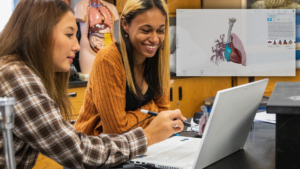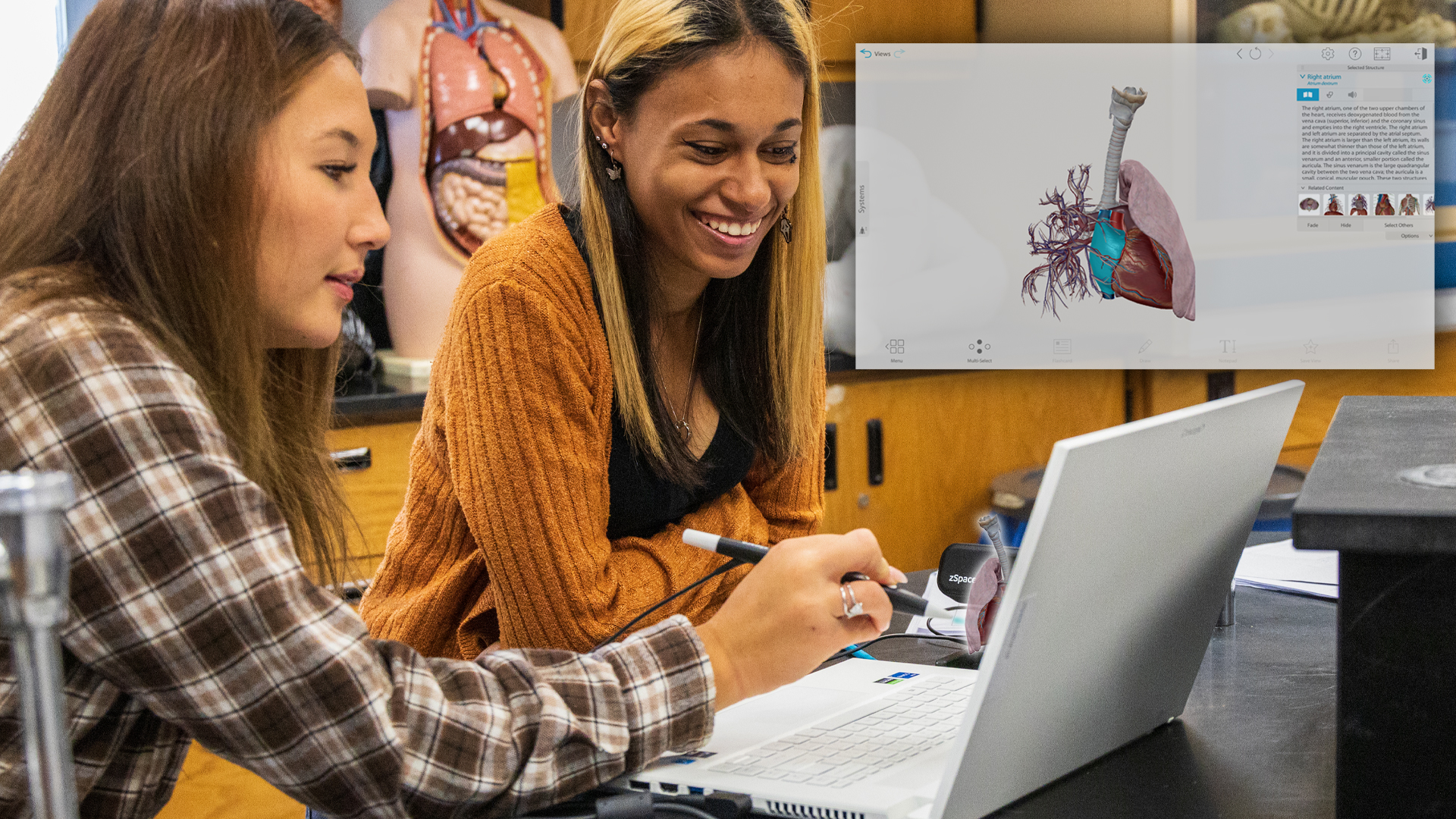In Stanislaus County, California, students connect with careers through augmented and virtual reality. As middle school counselor Erin Collins observed students programming robots, she was struck by their dedication to problem solving. “If something doesn’t work, they go right back to the computer and try again.”
Collins, of Sylvan Union School District in Modesto, California, spends her days with students at the Stanislaus Career Inspiration Center (CIC), where focused problem-solving activities are an everyday occurrence. The CIC serves students from seventh to 12th grade in Stanislaus County by partnering with 10 county school districts and houses both hands-on and virtual tools for career exploration in many pathways. Students can practice medical procedures on human or animal mannequins to learn about health careers. They explore game design in Unity, a real-time development platform. And they practice programming robots and drones.
Alongside those tools are 3D printers and a multitude of augmented and virtual reality (AR/VR) equipment. This includes an Anatomage Table, which allows students to simulate dissections, and the Oculus headset VR system. The students also use laptops from zSpace. Using a combination of augmented and virtual reality and 3D visualization, students explore complex concepts and ideas in a new way.
Augmented and virtual reality have been shown to boost academic performance.
Research shows students using zSpace achieve gains averaging a 16% improvement (pre-/post-test) in elementary, middle and high school courses (Hite et al., 2019). Using AR and VR also improves skills essential for the 21st century workforce, such as critical thinking, persistence, resilience and grit (Parlier, 2020).
An increase in performance and skills is part of the appeal of VR. But Sanjay Bhan, CTE coordinator at the CIC, has seen firsthand how technology can help motivation and excitement blossom as well. “The CIC allows students to explore diverse career opportunities and get them thinking about what they’re interested in and what they might be passionate about, that they didn’t know about previously,” Bhun said. “Our hope is to continue to expose them to new things.”
zSpace at the CIC
zSpace was the first augmented and virtual reality partner of NOCTI. And today they offer pathways that can help students earn up to 33 industry credentials. The content and lessons were just a few of the reasons the CIC chose zSpace as an AR/VR partner. zSpace offers several different immersive learning devices, including the newly released Inspire, which allows users to view and manipulate 3D content without a head-mounted display.
The students at the CIC learn with easy-to-use, all-in-one VR/AR laptops that include lightweight eyewear and styluses. They use their devices to explore health science, manufacturing, agriculture and robotics. With the stylus, learners can pick up a virtual item, manipulate it, zoom in, zoom out and blow it apart. Users can dissect a whale. Or they might take apart an airplane engine — experiences that would be impossible to recreate in a classroom.
“I got an opportunity to pick up a heart and go inside of it,” said Demitria Etche.garay, a teacher in Stanislaus County. “It makes me excited to bring this to my students because, frankly, they want to learn. This is going to spark their interest and give them that hope they need to go out into the world and get jobs.”
Other immersive learning activities include:
- Building virtual circuit boards while learning about the principles of low-voltage electrical appliances
- Using lifelike models to examine dental structures and perform procedures
- Engaging students in electrical, hydraulic, mechanical and pneumatic principles with advanced industrial robotics activities

As with all augmented and virtual reality solutions, these activities do not replace real-life, hands-on learning. But they do provide many advantages, such as allowing students to practice in safe, low-stakes environments. Students also can work with virtual equipment that would be too large or too expensive otherwise. AR and VR tools do require an investment. But they are often far less costly than real equipment and live experiments.
Leaders in the next generation of work
By using AR and VR in their learning environments, students gain more than specific subject knowledge. AR and VR are expected to become a major part of the work environment itself. Virtual surgeries, remote design visualizations in manufacturing and immersive gaming experiences. These are just a few of the real-life examples already happening today. Companies like Delta and IKEA use AR and VR technologies. By learning within VR and AR, students can start to prepare themselves for the workforce.
Staff at the CIC encourage all partner districts to visit and engage in activities that supplement what students are learning in the classroom. Students get the opportunity to try new things. And they can experience how aspects of different industries overlap and intersect.“This is a great opportunity for all Stanislaus County students,” said Bhun.
zSpace offers several different immersive learning devices, including the newly released Inspire, which allows users to view and manipulate 3D content without a head-mounted display.







